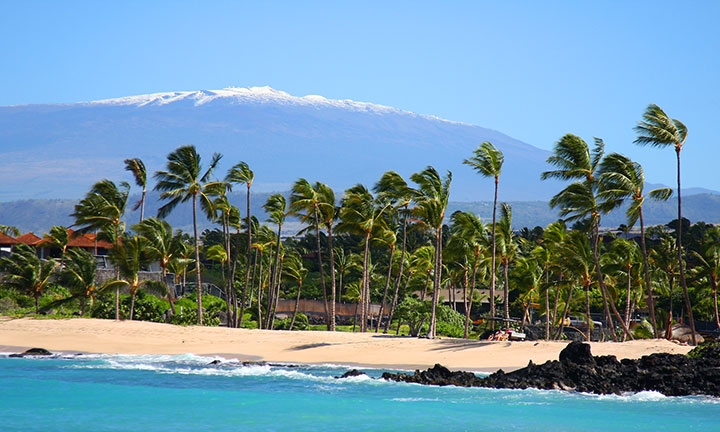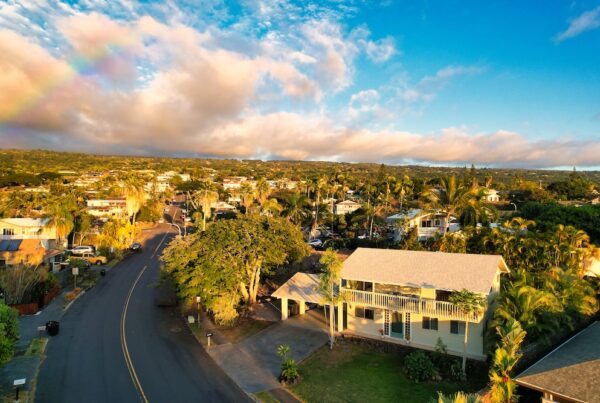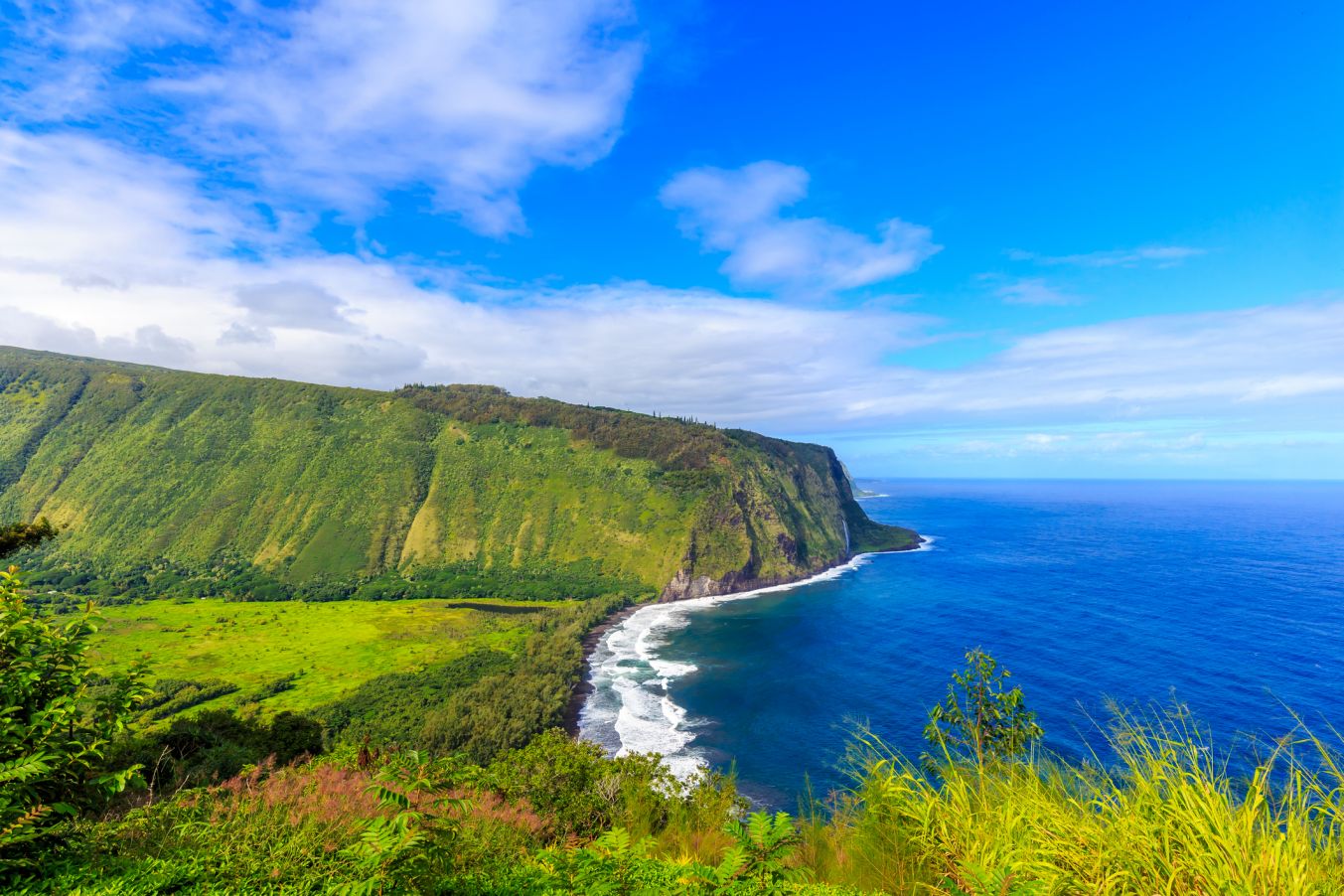An Overview of Hawaii’s Climate
Hawaii basically has just two seasons, winter and summer.
The weather is slightly cooler during the winter, though still quite tropical and warm. There is more rain during the winter, but sunny days are also common.
During winter you may need a sweatshirt or light jacket to keep warm during some brisk nights, but during the days temperatures are still often balmy and tropical. Temperatures in Hawaii are usually in the 70’s and 80’s during the daytime, all year around.
Due to the prevailing northeasterly trade winds, some areas of the Islands are wetter than others. Weather patterns in the Hawaiian Islands may also vary a bit depending on the locations of particular mountain ranges and other geographical features.
In general, the eastern (windward) sides of the islands tend to get more rain showers, as do the north shores. The west and south shores tend to be drier and hotter.
No matter what time of year it is, sunny conditions can almost always be found somewhere on the west and south shores, while the east and north shores are also sunny most of the time though usually a bit cooler and breezier.
Higher elevation areas can be much chillier, such as the Big Island Volcanoes of Mauna Loa and Mauna Kea where snow is common.
However, most visitor accommodations are near sea level, and vacationers usually just visit the higher elevation areas and then return to the warm tropical weather near the coast.
Ocean temperatures in Hawaii are pleasant all year around. The water is about 78 degrees Fahrenheit in the summer and dips only a few degrees during the winter months. This is warm enough for an enjoyable swim without any need for a wetsuit.
Many surfers wear a “spring suit” – a short, thin wetsuit – during the winter months, especially if they are in the water a long time. However, many surfers choose to surf without a wetsuit, even during winter.




